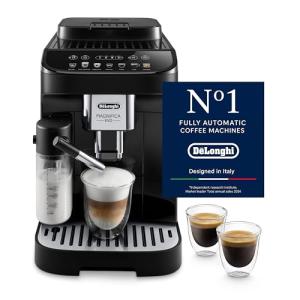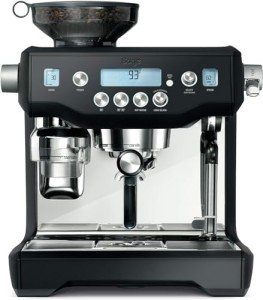
Stainless Steel Espresso Machine
FollowOverview
-
Sectors UI/UX
-
Posted Jobs 0
-
Viewed 5
Company Description
5 Killer Quora Answers On Italian Espresso Machine
The Exquisite World of Italian Espresso Machines
Espresso Machine With Grinder is not just a type of coffee; it’s a culture, a routine, and an experience clearly Italian. The abundant aroma that fills a café, the sound of the espresso machine hissing steam, and the accurate way the barista pulls the shot– all add to an extraordinary story. The heart of this experience depends on the espresso machine, especially when it comes from Italy. In this post, we will check out the elaborate world of Italian espresso machines, providing insights into their history, types, key functions, and what to try to find when acquiring one.
A Brief History of Espresso Machines
The origin of the espresso machine can be traced back to the early 20th century. It was in Italy where inventiveness fulfilled need, causing the creation of machines that would reinvent coffee culture across the world.
Timeline of Key Developments
| Year | Development |
|---|---|
| 1901 | Desiderio Pavoni patented the very first Espresso Machine UK machine, “La Pavoni.” |
| 1938 | Achille Gaggia presented the lever machine, producing thicker crema. |
| 1961 | Faema established the first electrical espresso machine, enhancing barista effectiveness. |
| 1980s | Digital controls and programmable functions changed home espresso machines. |
| 2000s | Technologies like PID controllers became mainstream for exact temperature level control. |
Today, Italian espresso machines remain an embodiment of workmanship and technology, representing not just coffee-making however an embodiment of Italian way of life.
Kinds Of Italian Espresso Machines
Italian espresso machines can be broadly classified into a number of types. Each type has unique qualities customized to the needs of customers, from novice home users to professional baristas.
1. Manual Espresso Machines
These machines attract the perfectionists who value the art of brewing. Users control every element of the procedure, from pressure to timing.
- Pros: Full control over the Espresso Machine For Office-making process, frequently produces exceptional quality shots.
- Cons: Requires practice, time-consuming, and might be daunting for novices.
2. Semi-Automatic Espresso Machine UK Machines
Combining the advantages of both manual and automatic machines, these deal more control than automatic machines while simplifying the developing procedure.
- Pros: Balance between automation and skill, much easier to produce constant shots.
- Cons: Still requires some technical know-how.
3. Automatic Espresso Machines
These machines take over the brewing procedure, using benefit without sacrificing quality.
- Pros: Easy to use, ideal for busy homes or cafés.
- Cons: Less control over the developing process; more reliance on machine calibration.
4. Super-Automatic Espresso Machines
These all-in-one machines do everything– from grinding the beans to frothing the milk– at the push of a button.
- Pros: Ultimate convenience, best for those who desire quality coffee with minimal effort.
- Cons: Usually costly, and you might need to compromise on some variables in the brewing procedure.
5. Piston and Lever Espresso Machines
These vintage designs use a manual experience and are understood for producing abundant, delicious shots due to the artisan nature of the brewing procedure.
- Pros: Retro beauty, maintains authentic espresso-making experience.
- Cons: Limited availability and can be quite expensive for quality models.
Summary Table of Espresso Machine Types
| Type | Pros | Cons |
|---|---|---|
| Manual | Full control, exceptional quality | Lengthy, requires ability |
| Semi-Automatic | Balance between control and alleviate | Requires some technical knowledge |
| Automatic | Easy to utilize, consistent quality | Less control over brewing |
| Super-Automatic | Ultimate benefit | Typically expensive |
| Piston/Lever | Retro beauty, genuine experience | Restricted schedule, cost-intensive |
Key Features to Look for in Italian Espresso Machines
When evaluating an Italian espresso machine, several functions can considerably affect efficiency and user experience. Here are some crucial components:
1. Quality of Materials
- Stainless-steel vs. Plastic: Stainless steel is durable and offers much better thermal retention, whereas plastic may affect the life-span and taste.
- Boiler Type: Single versus double boilers; dual boilers permit for simultaneous brewing and steaming.
2. Temperature Control
- PID Controllers: Essential for keeping steady temperatures throughout extraction time, boosting flavor extraction.
3. Pressure Control
- Pump Type: Vibration pumps prevail in home machines, while rotary pumps are normally found in commercial machines. Higher pressure helps produce much better espresso shots.
4. Reduce of Cleaning
- Machines with removable brew heads, drip trays, and steam wands make maintenance a breeze.
5. Size and Aesthetics
- Think about the size of your cooking area and pick a machine that complements your design.
Regularly Asked Questions (FAQ)
Q1: What is the distinction in between espresso and coffee?
A1: Espresso is a focused kind of coffee brewed by requiring warm water through finely-ground coffee beans, leading to an abundant taste and thicker consistency compared to regular brewed coffee.
Q2: Do I require to use a specific kind of coffee for espresso?
A2: While you can use different coffee types, espresso is normally made from espresso beans– medium to dark roasts with strong tastes.
Q3: How often should I clean my espresso machine?
A3: Clean your espresso machine after every usage to maintain the flavor. Conduct a deep cleaning at least once a month, including descaling.
Q4: Can I use my espresso machine to make other kinds of coffee?
A4: Yes, many espresso machines can likewise brew Americanos and other specialized beverages, depending on their functions.

Q5: How long should I extract my espresso shot?
A5: A basic extraction time for a double shot is in between 25-30 seconds.
Buying an Italian espresso machine transcends simple coffee-making; it connects you to a rich culture and the art of espresso developing. Whether one go with a manual, semi-automatic, or super-automatic machine, the pride in pulling an ideal espresso shot is generally rewarding. With technology progressing and Italian craftsmanship prominent around the world, people can discover a machine that fits perfectly into their lifestyle while raising their espresso experience. So why wait? Dive into the terrific world of Italian espresso and satisfy your coffee yearnings with credibility and design!

